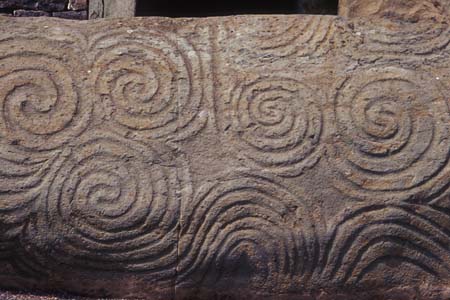The true wonders of the world are the structures that have withstood time, war and destruction, and natural disaster and poverty.
Scientists and Archaeologists have been researching these amazing feats for years. They have established time lines for the beginning of life, the scriptures that foretold the future, and the artifacts left behind that have been carbon dated as far back as millions of years. If these remnants of history are still standing after the evolution of the world, then these are the true wonders of the world.
The Great Pyramid of Giza

This particular pyramid is the only original Wonder of the World still left standing from 2nd century BC. "Callimachus of Cyrene (305BC-240BC), Chief Librarian of the Alexandria Mouseion, wrote "A Collection of Wonders around the World." According to the original list, the Pyramid of Giza was one of the first added to the list. The pyramid is located in the city of Giza and is today a part of the greater Cairo area of Egypt.
Newgrange-Per my Readers Requests-Make that 14
Newgrange is over 5,000 years old and according to Carbon-14 dates, it is more than 500 years older than the Great Pyramid of Giza in Egypt, and predates Stonehenge trilithons by about 1,000 years. What fascinated me most about this site is that a beam of light illuminates the floor of the structure during the Winter Solstice. Newgrange was constructed with such precision, it looks as though it was built yesterday.
The Great Wall of China

The Great Wall was initially built in sections for protection against different states. The sections were then fused in 221-206 BC during the Qin dynasty. The wall served its purpose well up until the time when the dynasty was weak from within the walls. Both the Mongols and Manchurians were able to invade due to the weakness and poverty of the people, not the wall itself. It wasn't until 1368-1644 that the wall started to appear as it looks today.
Mount Everest

Everest is located at the snowy peak of the Himalayas in Nepal, which stands on the border of Tibet. Mount Everest is the highest mountain in the world reaching heights of 29,028 ft. The atmospheric pressure at the top of Everest is about a third of sea level pressure, implicating that there is about a third as much oxygen available to breathe as at sea level. Individuals that have reached the top have often said this was the closest to God they would ever be. I believe that this mountain may be the most challenging feat that anyone could possibly experience. It's a challenge in the spiritual sense, a natural phenomenon made by the Gods or whoever your God may be, and a chance to prove to yourself how powerful self preservation can be.
The Colosseum
The Throne of Persepolis
Borobudur Temple
Lake Baikal
It is said that this lake is 25 million years old-the oldest lake on the planet. It is also the deepest lake, holding more water than all of North America's Great Lakes combined. Its marine life is composed of more than 1,500 animal species and 1,000 plant species. Baikal is not like any other lake on the planet in that it has oxygen- rich water that circulates from the surface to the deepest parts, implying geothermal vents. "To help the effort, UNESCO has recommended that the lake and its watershed be designated a World Heritage Site."
Palau

"Palau's coral reefs began to grow millions of years ago when coral polyps colonized submerged volcanic mountains." There is said to be over 700 assorted species of corals and 1500 classes of fish making it the most diverse reef on the planet.
The Catacombs of Kom el Shoqafa

The catacombs, dating back to the 1st century AD, are located in one of my favorite cities on earth Alexandria, Egypt. It was a meeting place for people with common goals and tradition rather than war and destruction. Due to earthquakes and construction, the catacombs had been destroyed or obstructed. It wasn't until 1900 that by accident, a donkey fell through a hole in the ground and into the very heart of the structure.
The Grand Canyon
Machu Picchu
The Temple of Inscriptions

The Temple is located at the eastern edge of the Rio Usumacinta Basin in the foothills of the Sierra Oriental de Chiapas at an elevation of slightly less that 3000 m. Even though the earliest occupation of the site dates to about 100 BC, it only became a population around 600 AD and all construction at the site had halted by about 800 AD.
Petra

Petra was the capital city of Nabataeans and was dominated by a tribe of pre-Roman Arabs around the time of Sixth century BC. Despite several attempts to conquer their capital, the Nabataeans remained virtually self-regulating until the defeat of Antony and Cleopatra and the reunification of the Roman Empire by Octavian in 31 BC. In 106, the Romans finally captured Petra to mark the beginning of the decline of the city.
Written by the Ancient



















